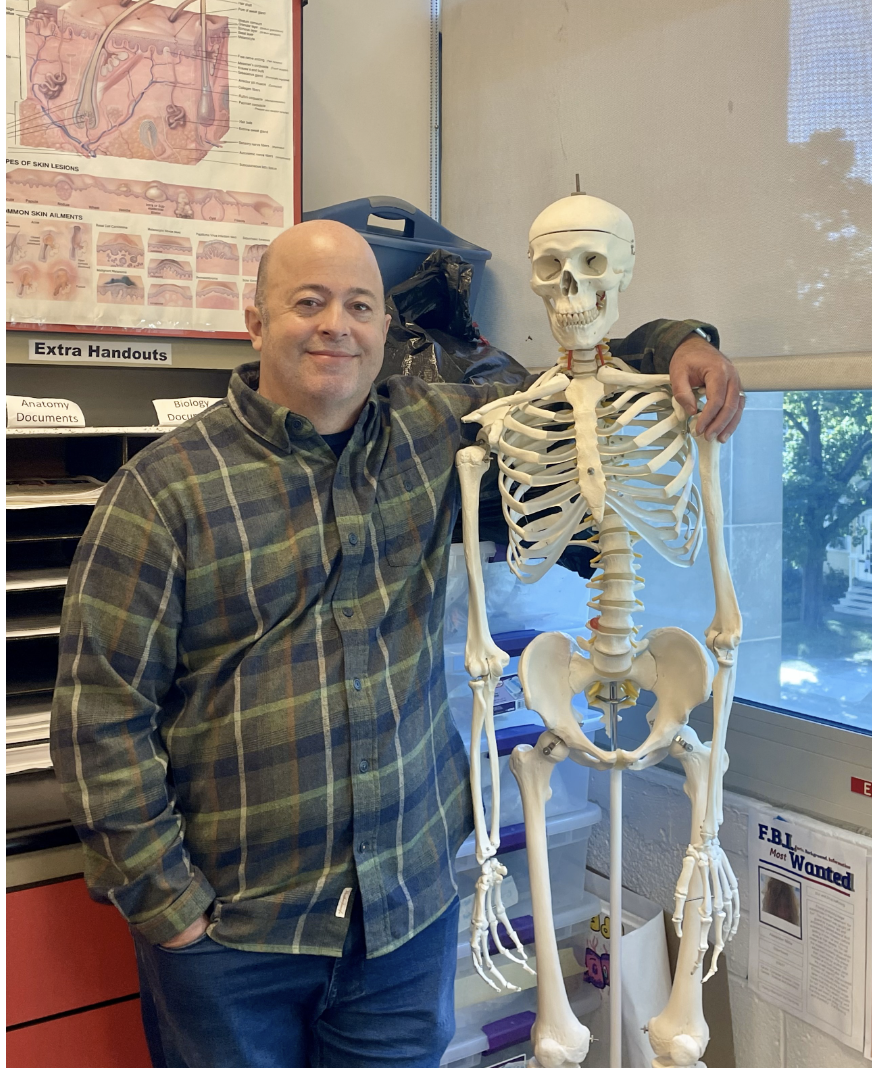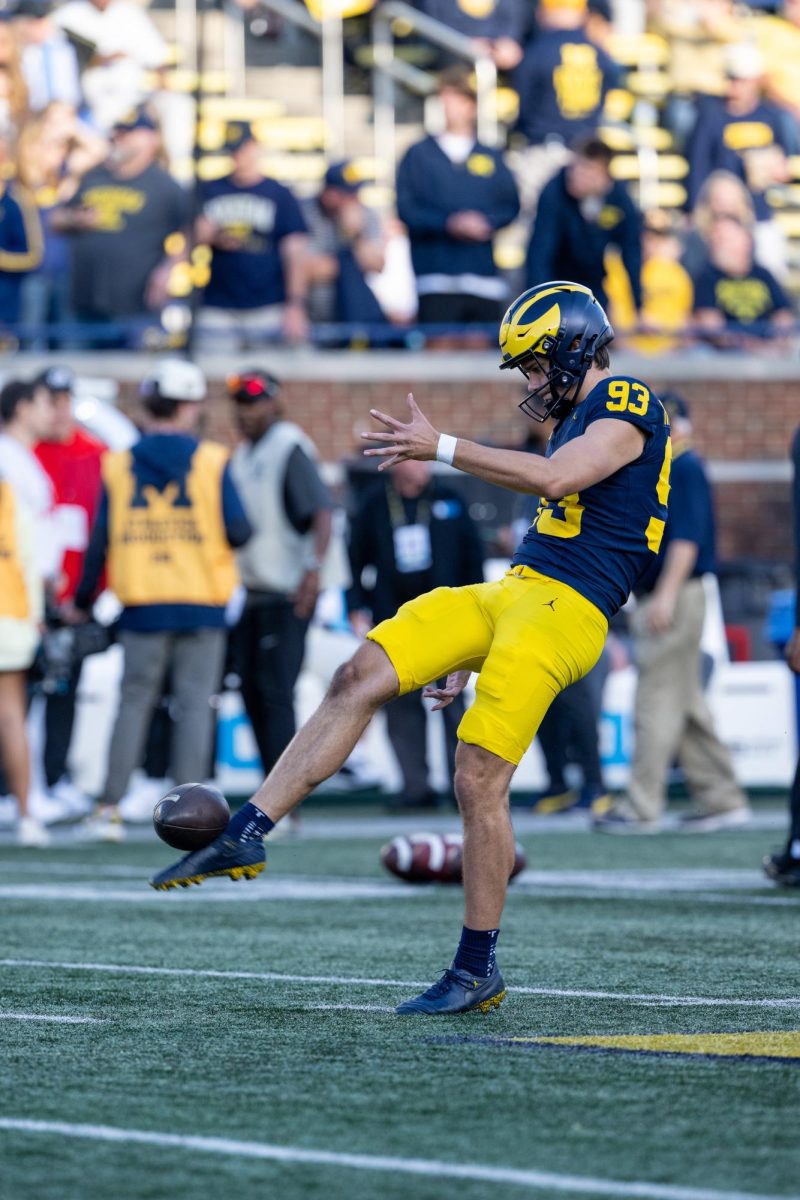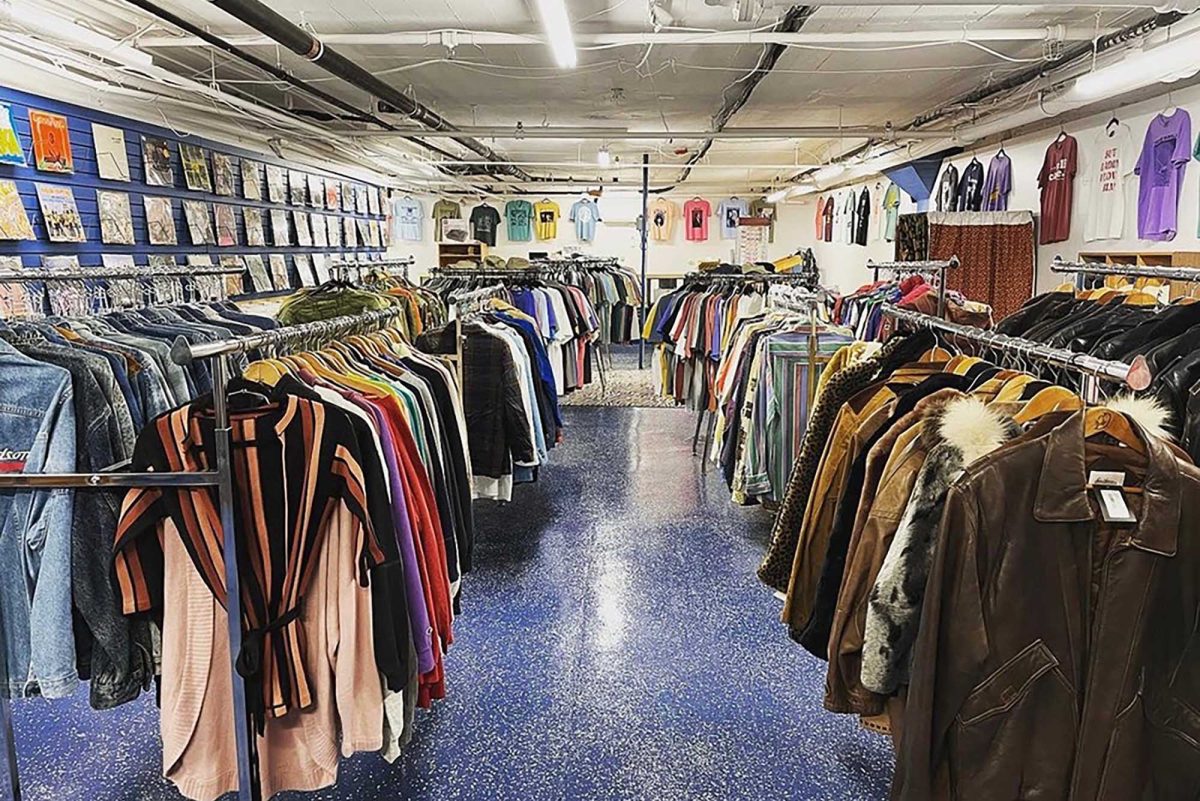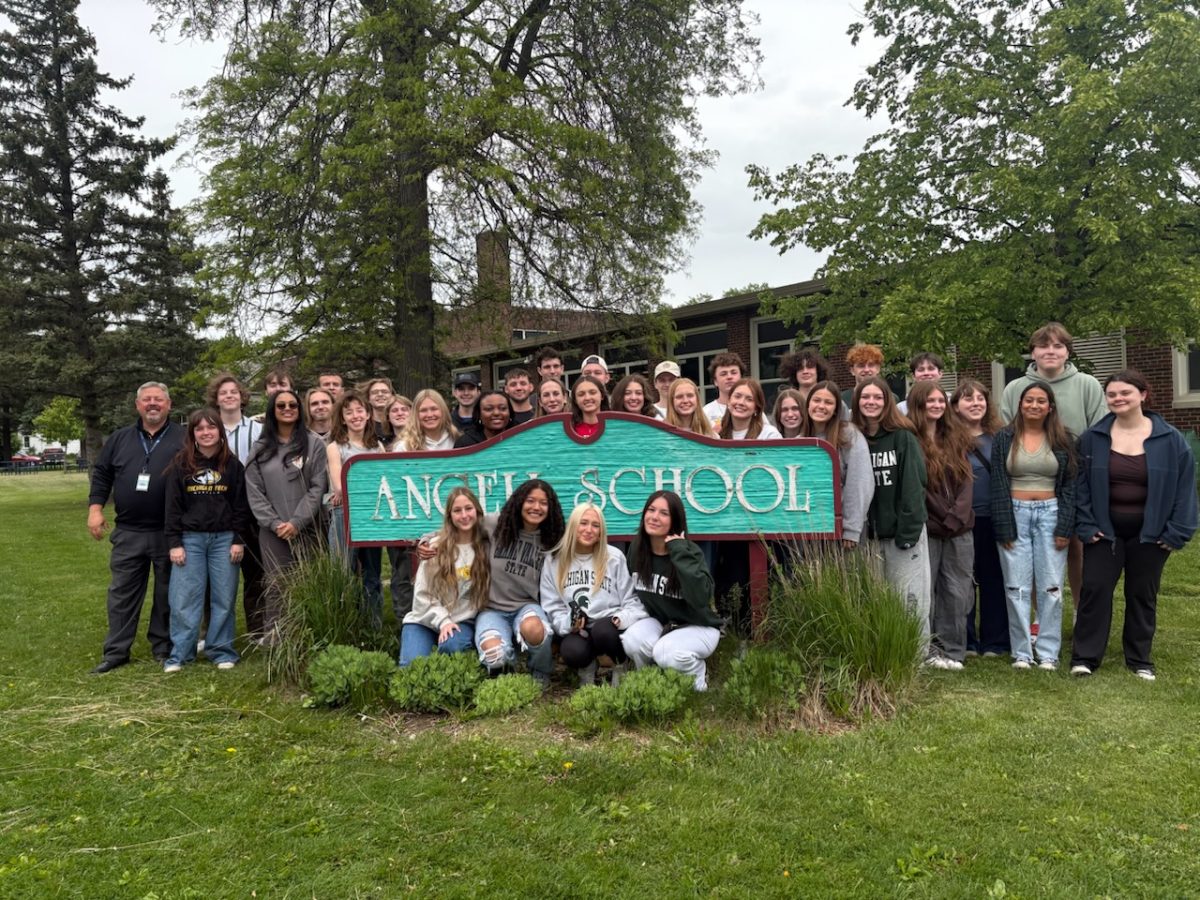Walking into room 239, it feels that every corner deserves exploration. To the left, you see an array of posters lining shelves, displaying information about everything from the anatomy of the heart to explanations of knee injuries. On top of these shelves, you notice a set of skulls next to a cat skeleton, and an Elmo-stuffed animal. You then turn around to the right side of the room and observe two human torso models topped with fedoras, life-sized models of the muscles of a human leg, and two hanging skeletons showing the anterior and posterior view of the human body. Finally, your attention shifts to the classroom ceiling, where, like many of the science teachers at BHS, you can find an array of student-painted ceiling tiles. One displays an intricately drawn skeleton with the caption “pollex up,” while another shows a fascinating diagram of a fingerprint made in 2018.
As you then expand your view to the rest of the room, you see the smiling face of Michael Skowronski. Mr. Skowronski is the owner of all the treasures in the room, and teaches there every day. Luckily, this month he is the Teacher of the Month, so we get to learn more about him. Teacher of the Month is a segment of The Spectator where we feature a teacher at Berkley High School and take a deep dive into their lives both in and outside of the classroom in order for the BHS community to get to know them better.
Mr. Skowronski teaches Biology, Forensic Science, and Honors Anatomy. He is a very prominent teacher in the science department and is loved by his students from each class he teaches! He attended Madonna University and double majored in Biology and Chemistry. He then worked at Divine Child before coming to Berkley, where he has been for the past 27 years! In those first years of teaching here at Berkley, he actually started both Forensic Science and Honors Anatomy.
When talking to Mr. Skowronski, he first described when and why he decided to pursue teaching. He revealed that he has known he wanted to be a teacher ever since he was a Sophomore in high school. In his own Anatomy class, he learned that, “muscles move on such a small level, and I thought it was amazing, and from there I knew I wanted to teach it.” He has been passionate about this career for much longer than many can say.
Outside of teaching, he explains that he “love[s]to cook and spend time with family.” In fact, he has a 14-year-old son, who is the youngest locksmith in the state of Michigan! Furthermore, he revealed that he “performs magic,” and then later gave a fascinating card trick demonstration. So, if you ever have a class with Mr. Skowronski, make sure to ask for a trick!
Shifting to inside the classroom, Mr. Skowronski shared a bit about how he runs his classes. He revealed how his teaching style is unique, saying, “I like to apply knowledge as much as possible, to answer ‘why are we doing what we are doing?’.” This hands-on learning aspect is very apparent in all three of his classes.
In Forensics especially, students experience many projects unlike any other class at Berkley. One of the many labs they do in class is a real-life crime scene, set up in the science lab. Passing through the caution tape, many times you would be able to see a real (mannequin) dead body, always surrounded by evidence. The students must take pictures, notes, and apply all of their skills learned in class to uncover what occurred. They measure out and map everything in the scene down to the half-inch from tables and chairs to discovered documents and blood spatters, take fingerprints, analyze hair and fibers under microscopes, and more.
The cases he creates for the students to uncover are so in-depth that it usually takes a long time for him to create them. For the large end of the year scene, Mr. Skowronski said that it took him between 12 and 13 hours to type out and set it up. He also revealed that to come up with the scenes, he gets “inspired by real-life cases.” In addition to Forensics, Mr. Skowronski’s Biology and Anatomy classes also display a lot of hands-on lab work, from dissections to constant microscope work.
Overall, it is clear that all of the work Mr. Skowronski puts into every class period pays off in the lives of his students. When asked what his favorite teaching memory was, he talked about a time when he “had a kid who was struggling in class. He was doing a directed study. He ended up coming back years later, so thankful for that struggle because it taught him so much. Now, he’s an infectious disease doctor at Corewell.” Mr. Skowronski then revealed that he loves teaching high school students because they “inspire [him] for tomorrow.” He advises incoming freshmen to “enjoy the moment and work hard, because it goes fast.”







